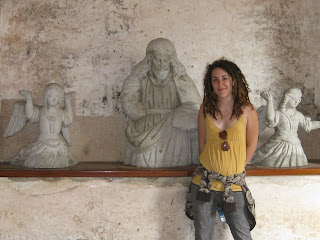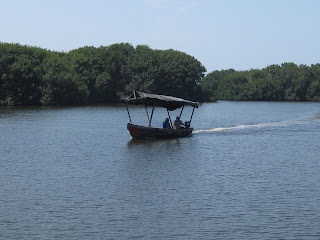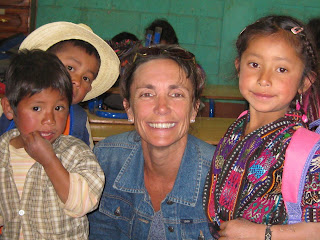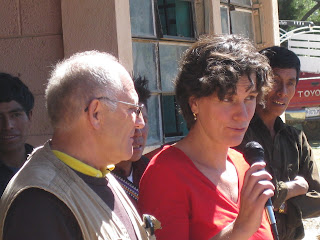
Today March 28th, 2009 was a milestone for the language centers at the Universidad del Valle's three campuses: UVG Central campus in Guatemala City, Proesur on the east coast, and my post, UVG-Altiplano. It was also an important landmark for Eastern Carolina University in Greenville, NC since it was the first time two faculty members, Debra O'Neal and Marjorie Ringler, had given an interactive four-hour SIOP workshop through a four way teleconference to university English and bilingual content teachers in Guatemala. SIOP (Sheltered Instruction Observation Protocol) is a model of instruction being promoted in K-12 classroom nationwide due to the rising population of children in the US whose first language is not English. Despite a few surmountable technological difficulties regarding audio at the beginning and during the presentation, the workshop was a great success! Our teachers at UVG-Altiplano were very pleased and impressed by the quality of content and delivery of the presentation, making the effort of getting up early on a Saturday worthwhile. Here is background information on how all of this evolved.
Knowing that I would be stationed for six months at a university in Guatemala, I invited friends and colleagues to come down and visit but at the same time offer professional development workshops to the English teaching faculty here. One person I contacted was Debra O'Neal, whom I have known for a few years through Carolina-TESOL. I know Deb loves to travel (just as an aside-she flies her own plane to conferences). Deb is also a dynamic presenter and experienced trainer in SIOP, a methodology that would be very pertinent to teacher trainers, content teachers of bilingual schools, and EFL teachers here in Guatemala. She couldn't work it out to come here personally, but she proposed that she instead give the workshop as a teleconference. Deb is very much at ease with technology and has had lots of experience with distance learning. So plans for this workshop in March already began rolling in January.
The morning of the 28th, Helga, our new English program director, picked up me, Josanne, and another former UVG English teacher around 7:30 and we drove up to the university where we immediately began setting up for the workshop. Nine people came which was a bit disappointing since we had invited many teachers from the three bilingual schools in Panajachel. Nonetheless, the people who did come were very much engaged in the workshop.
An interesting twist in the planning of this workshop is that we did not know that the third campus, Central, in Guatemala City was joining us. Much to our amusement, we found out 30 minutes into the workshop that they were also participating. That's Guatemala for you! There are always surprises. The presenters very gracefully adjusted to their expanded audience.
Deb and Marjorie had to condense a three-day into a four-hour workshop and they succeeded. After they introduced key language acquisition theories that underlie SIOP (e.g., Krashen's hypotheses and a little of Chomsky of course) , they guided us through the SIOP model and corresponding hands-on activities. After each activity, they asked faculty at each campus to share their results. It was great fun!
During the wrap up, Deb and Marjorie asked if we had questions. All three campuses asked if they could have a copy of their Powerpoint. Central campus asked about the success rate of the approach and the presenters responded that it was a research-based methodology. They also reported positive results from their own research findings regarding the implementation of SIOP in rural schools in North Carolina. Spokespeople from each campus then thanked their American colleagues wholeheartedly for their effort and very informative workshop.
It was a very profound, enlightening experience. First of all, it opened the doors for more training workshops of this nature between American and Guatemalan campuses. Furthermore, the SIOP workshop telecasted at all three campuses brought the respective faculty closer to one another, which is one of the goals of the Universidad del Valle.
Thank you again, Debra O'Neal and Marjorie Ringler, for an inspiring, history-making workshop!

























































